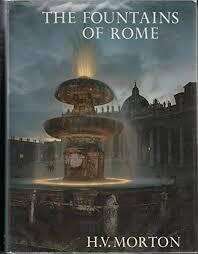
The Fountains of Rome by H. V. Morton
Check my rate
| Main centres: | 1-3 business days |
| Regional areas: | 3-4 business days |
| Remote areas: | 3-5 business days |

| Main centres: | 1-3 business days |
| Regional areas: | 3-4 business days |
| Remote areas: | 3-5 business days |
Of all the splendors of Rome, few have a more intriguing history than her great fountains, which have whispered their enchantment to so many generations. H. V. Morton has obviously fallen under their spell, and besides loving them for their beauty lie is fascinated with them as living links with the remote past, a subject into which he has delved deeply. His words, together with Mario Carrieri's magnificent photographs, make The Fountains of Rome a warm tribute to these "poems in stone." The water for the monumental fountains, as well as for the housewife's kitchen tap, flows from springs and lakes and rivers many miles away along six separate aqueducts. In a.d. 226 the last of the eleven ancient aqueducts was built. The Goths destroyed them in a.d. 537, and the fountains dried up in the Dark Ages. In 1453 Pope Nicholas V built the first of Rome's modern aqueducts by restoring the ruined Aqua Virgo, which dated from 19 b.c. Others followed the great pope's lead, and today Rome's water is supplied by a system that would seem perfectly familiar to a magically returned first-century Roman engineeror to Frontinus, who wrote De aquis urbis Romae in a.d. 97 and who took great pride in his post as Chief Commissioner of Water. The Trevi, in which today's tourist tosses his coin to the tune of 70,000 lire a week; La Pigna, which dates from the first century a.d. and is one of the few objects still standing in Rome upon which the eyes of Augustus must have rested; the fountain in the Piazza Mattei (which the author thinks the loveliest of them all); the Fountain of Paul V, high upon the Janiculum, off the beaten track of tourists, most of whom are unaware of its existence; the twin fountains of St Peter's, probably the most celebrated fountains in the world; the Old Boat at the foot of the Spanish Steps ... all these and many others are described in detail.